9 snow blowing mistakes to avoid this winter
Work smarter, not harder
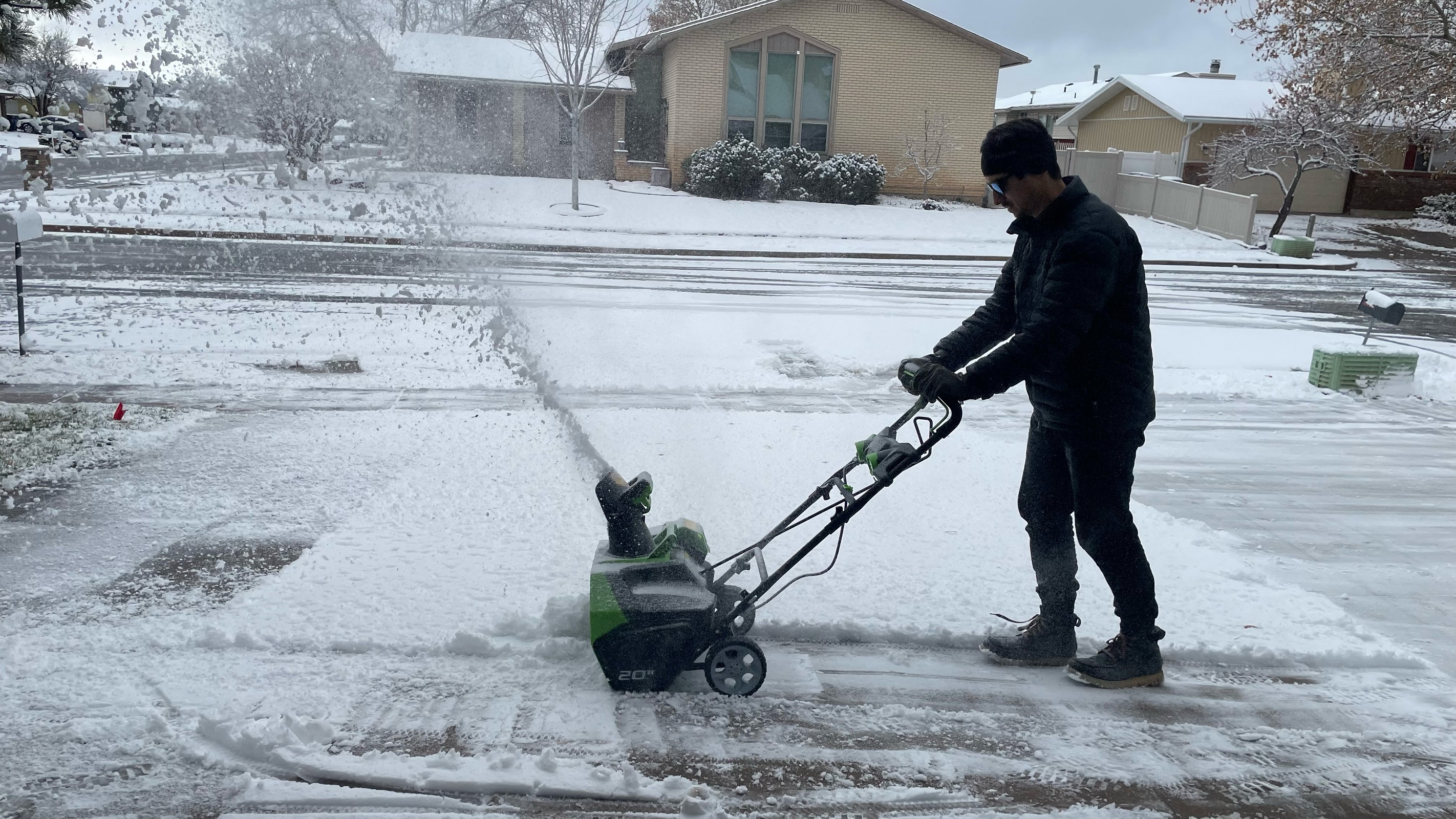
Snow removal in the winter is a must. Thankfully, with the help of a snow blower, like the Sun Joe Single Stage Snow Blower, the task doesn’t have to be back-breaking work. Still, working as efficiently as possible will save you time and energy when snow blows on your property.
Without knowing the proper techniques, you can do more work out of snow-blowing than it has to be. You can also put the snow blower engine and components at risk if you don’t store it properly, push it too hard, or make a few of these common snow-clearing mistakes below.
“The most common repairs we see are fuel-related issues. People improperly store their machines,” said Andrew Mikesell, Sales Representative at Wilkinson Supply Inc. Wilkinson Supply Inc. has been repairing and selling power equipment in Ogden, Utah, since 1979, and Andrew provides expertise on how to eliminate common snow blower mistakes, so you don’t need to take your blower in for repairs at the beginning of every season.
Knowledge is power, and by knowing these common snow-clearing mistakes, you can work to avoid them. With proper snowblower maintenance and by correct snow blowing your property, the best snow blowers will last many seasons, and you’ll conquer winter year after year.
Here’s a list of snow-blowing mistakes to avoid this winter.
Wilkinson Supplly Inc. has been in business in Ogden, Utah, since 1979, specializing in sales, parts, and accessories for power equipment. Andrew Mikesell is an expert with both single and two-stage snow blowers and has advanced knowledge on proper snow blower maintenance and how to keep your snow blower operating trouble-free for many seasons to come.

This battery-powered snow blower is a convenient machine that does not require much maintenance. It starts up quickly and can remove light snow quickly. You don’t have to worry about gasoline and oil thanks to the battery-powered operation. The batteries last close to 30 minutes before the engine auto-turns off. In our tester's experience, that was enough time to clear a two-car driveway and over 150 feet of sidewalk.
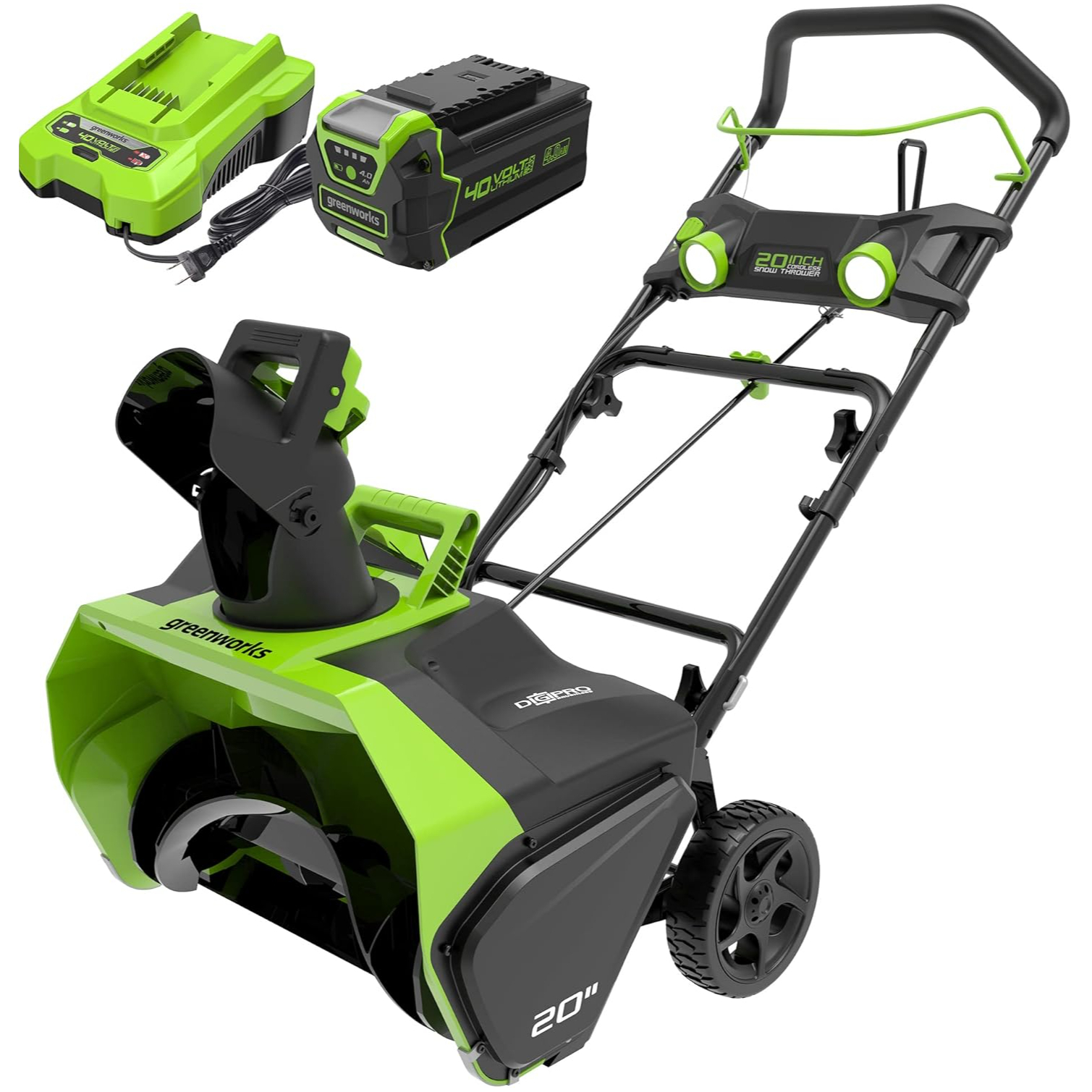
The Greenworks Single Stage snow blower can be used to remove light snow from driveways and walkways. The single battery-operated machine is simple to use and requires much less maintenance compared to gas-powered snow blowers. Our tester was able to remove snow for roughly 21 minutes before the engine began to auto-shut off. It’s a decent machine if you are only clearing 2-4 inches of snow off the ground at a time.
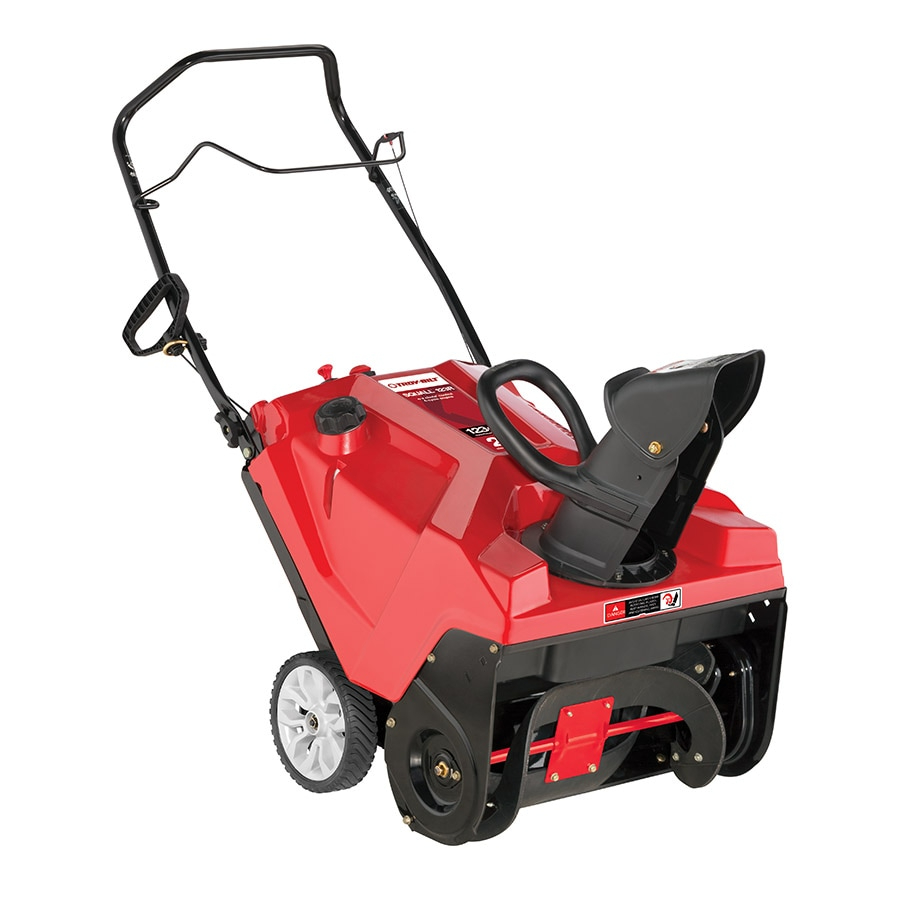
The Troy-Bilt snow thrower sports a pull-start 4-cycle engine, which takes away the need to mix oil and gas - making it easier to operate. The auger design grips the ground for maximum clearing power, making it ideal for up to 6 inches of snowfall, and the compact size makes it easy to store and maneuver. The E-Z chute control makes it easier to change the direction of snow discharge up to 190°, and the thrower comes with a 2-year limited warranty and cover for protection.
9 snow blowing mistakes to avoid this winter
1. Forgetting to remove debris from pathways
One of the most common mistakes is forgetting to remove debris, like your children’s or the dog’s toys, from the driveway or walkway before snow blows your property. The snow blower will suck the debris into the auger, and it could cause damage to the auger or motor (depending on the debris). It’s worth checking for debris in the snow before you start to avoid this hazard.
2. Waiting for the snow to stop before starting
It's natural to think, “If I just wait for the storm to end, I only have to remove snow once.” While that line of thinking is semi-true, removing too much snow at once can be detrimental to your snow blower. Single-stage snow blowers, especially battery-powered ones like the Greenworks Single Stage Snowblower, aren’t made to tackle huge snow removal jobs. But, if you clear the snow on your property more than once during a snowstorm, the snow removal task will remain manageable for your machine.
Sign up to receive the latest news, reviews, buying guides and deals direct to your inbox
3. Not wearing the right shoes
Even though you're clearing snow, your walkways may remain slick. Shoes with no grip can lead to falling and put you at risk for injury. You also don’t want to fall and lose grip of your snow blower. That’s a hazard waiting to happen. Having proper footwear like snow boots with grippy soles goes a long way in preventing falling and injuries.

4. Removing more snow than recommended
Piggybacking on the previous point, trying to remove too much snow can cause a multitude of pain points. “It’s important to use a machine that can handle your regional weather. If you live up in the mountains and get a ton of snow, an inexpensive, single-stage snow blower isn’t going to work very well,” said Mikesell. The snow blower may not be able to throw snow far enough, resulting in snow being thrown back onto your property. That snow will be even more heavy and difficult to remove. Too much snow can also cease the engine. Doing that repeatedly is a surefire way to burn out your snow blower engine.
5. Not accounting for wind direction
The wind can make it a real pain to remove snow from your property. Wind can blow snow back onto your property and into your face (which is really not fun), making snow removal a frustrating endeavor. Here’s how you should approach snow blowing and considering the wind:
If no wind is present, start your first pass down the middle of your driveway and work in an “inside-out” circular motion. By doing this, you won’t waste time to stop and adjust the chute over and over.
If the wind is blowing, your first pass should start against the wind. After that, every pass after that will be with the wind in a back-and-forth pattern, allowing the wind to help you propel the snow. This is different from the “inside-out” method because you’ll have to adjust the chute with every pass you make, but you’ll be using the wind to your advantage.
6. Not adjusting skid shoes
The skid shoes keep the auger from hitting the ground. And if you’re plowing over a gravel driveway (not recommended), skid shoes that are too low can suck up gravel and rocks into the snow blower, which is not good. “Aside from fuel issues, we make a lot of repairs on skids and scrapers. People don’t check those, and their machine is too low. That leads to damaged parts,” said Mikesell. Make sure the skid shoes are at least three millimeters off the ground or higher if needed. He continued, “And be sure to check the skids every time you go out to remove snow.”
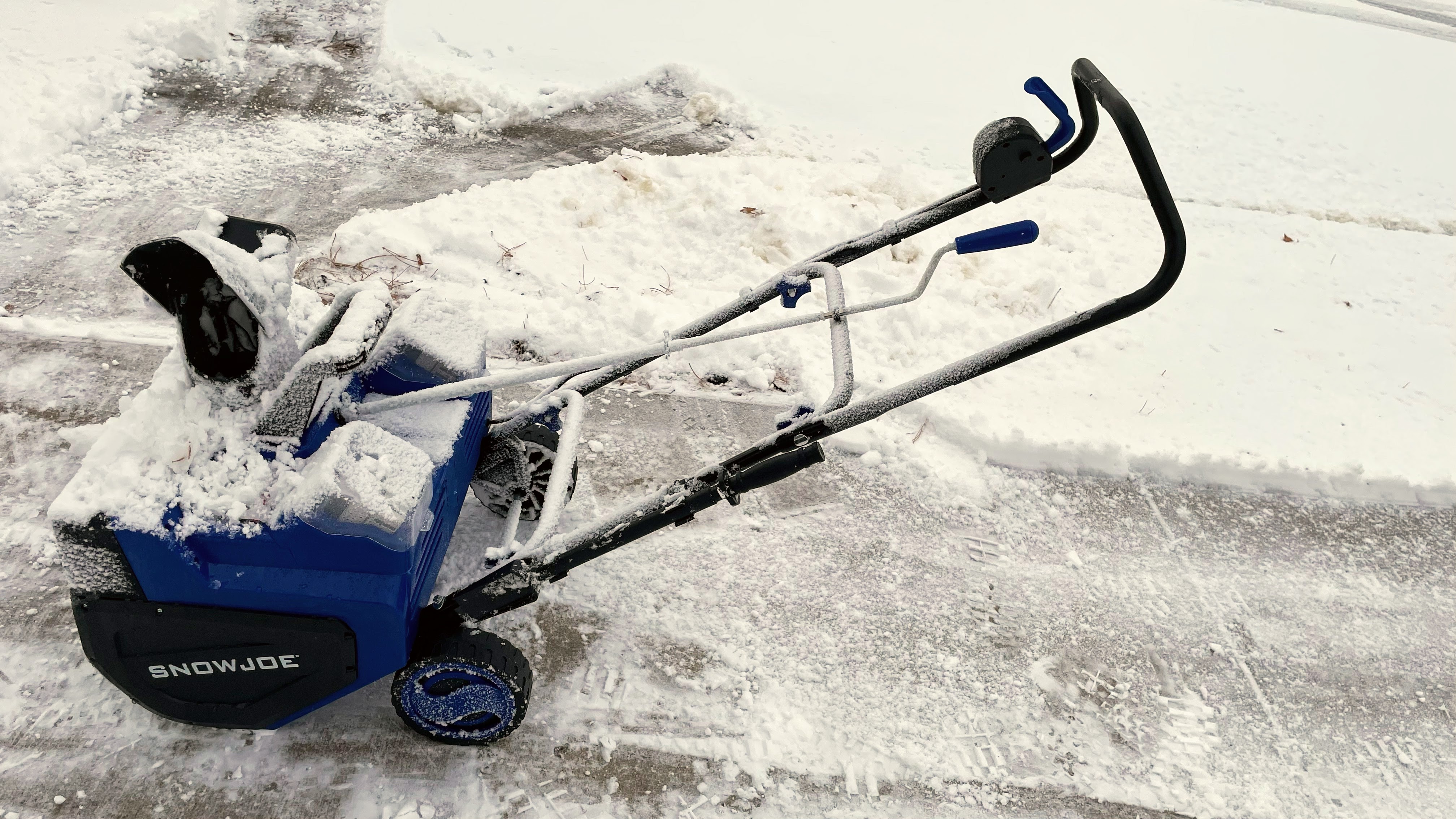
7. Unclogging chute and auger without turning engine off
Reviews
Whirlpool 24" Stainless Steel AI Dishwasher Review
Napoleon TravelQ PRO285 Portable Gas Grill review
Dreame L40 Ultra Robot Vacuum Cleaner and Mop review: almost hands-free cleaning
GE Profile Smart Mixer with Auto Sense review: a powerful, thorough mixer
Echo eForce DPB-2500 review: a leaf blower as a snow removal tool?
DPAS-2100 + Pro Paddle Attachment review: a new way to remove snow this winter?
Midea MAD53109APK 5.5QT Air Fryer review: a small, simple, and highly effective option
Eureka J15 Pro Ultra Robot Vacuum review: hands-free cleaning for busy families
This is a grave mistake that can cause serious injury. When the chute and auger are too packed with snow, it can stop the auger. Reaching in and removing the snow can free the auger to continue to move while your hand is still in there, and that’s a guaranteed ticket to the ER. Before you unclog the chute or auger, make sure you turn the engine completely off and use a chute cleaner or stick to remove clogging or debris.
8. Not allowing the engine to cool down
When you turn your snow blower off, you should allow it to run on its lower setting for 30 - 60 seconds before stopping. This is a good practice for proper engine maintenance. Allowing your engine to cool down is also critical for proper refueling safety. Spilled gasoline into a hot engine could cause a fire, putting your personal safety at risk. Allow the engine to cool down for 10-15 minutes if you must refuel in the middle of snow removal.
9. Not fueling the machine properly
Finally, when you are done (after you’ve waited for the engine to cool down), you should fuel that machine tank back to full. “More fuel means less air in the tank. Less air means less room for potential residue and moisture build-up,” said Mikesell.
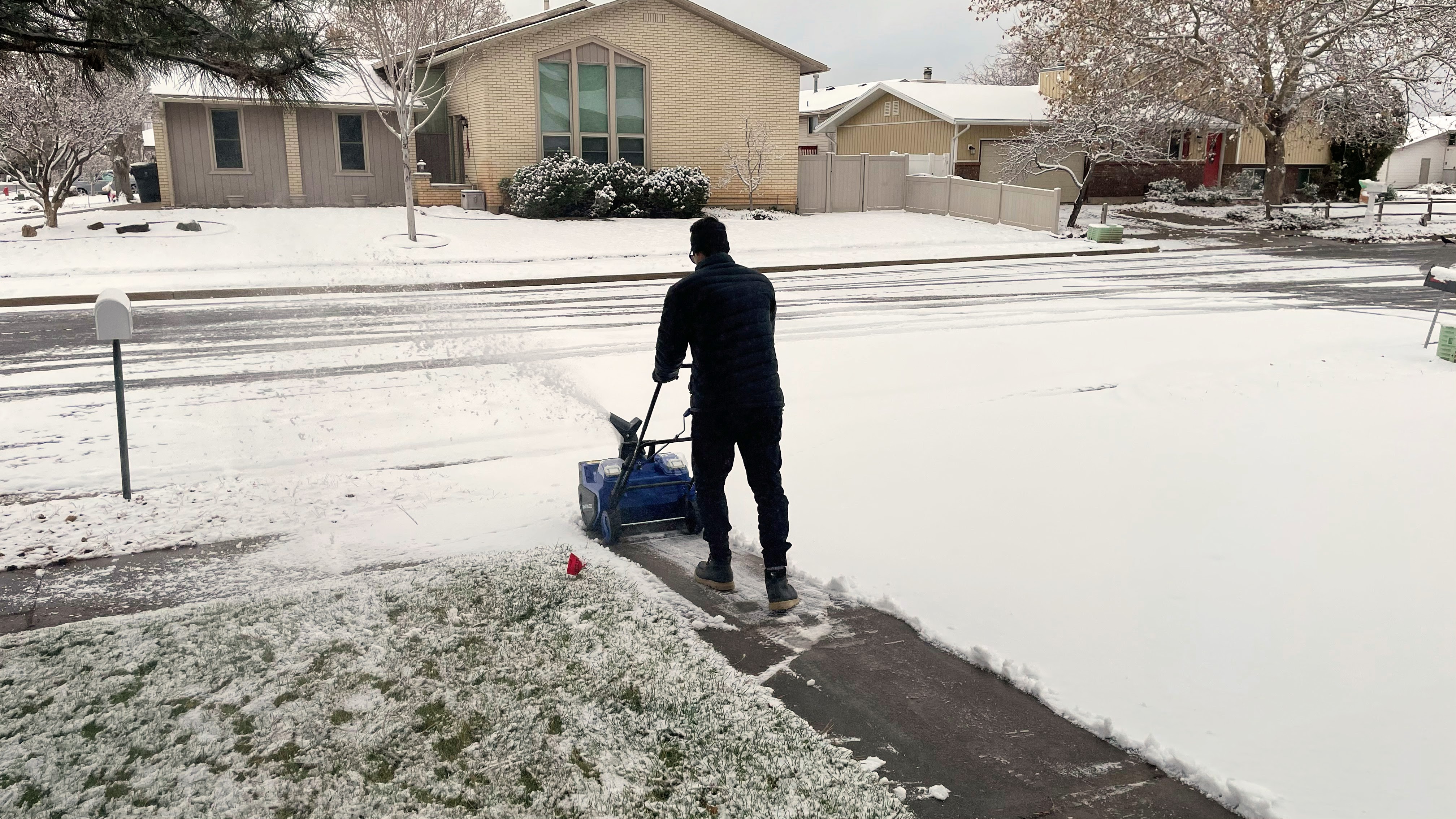
Snow blower mistakes: FAQs
When should you start snow blowing?
Even if it is still snowing, when there are 2-3 inches on the ground, it is a good time to begin. You may have to snow blow more than once, but it will be easier to remove snow and easier on your snow blower engine.
What is the best pattern for snow blowing?
Start by going down the center of your driveway. Whatever way you turn, continue to turn in that same direction, moving forward, going in an inside-out, circular pattern. This way, you don’t have to stop and adjust the chute every time you turn.
How do I keep snow from sticking to my snow blower?
Spray WD-40 or a silicone spray in and around the chute before you begin. This will create a moisture barrier that will prevent snow from sticking in the chute.

With a Bachelor's Degree in Communications and Media from Weber State University, Jonathan Knoder is all about Smart Home and AV tech. He currently works as a Content Manager for AvantGuard Monitoring Centers in Utah. Jonathan has written extensively and at great length about yard care and snow blowers for Top Ten Reviews, and this is his subject area.
